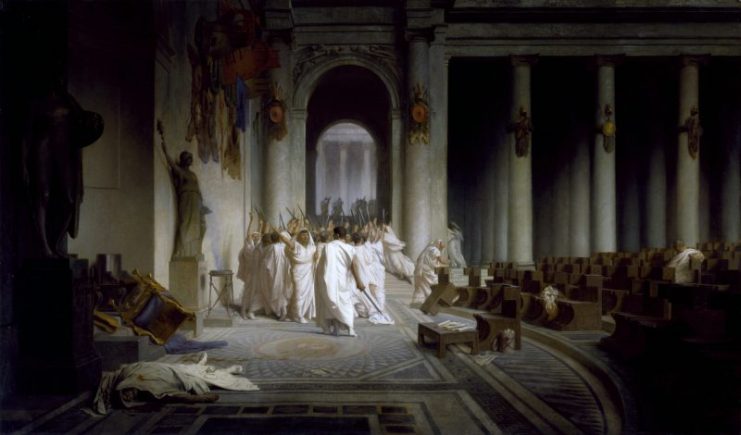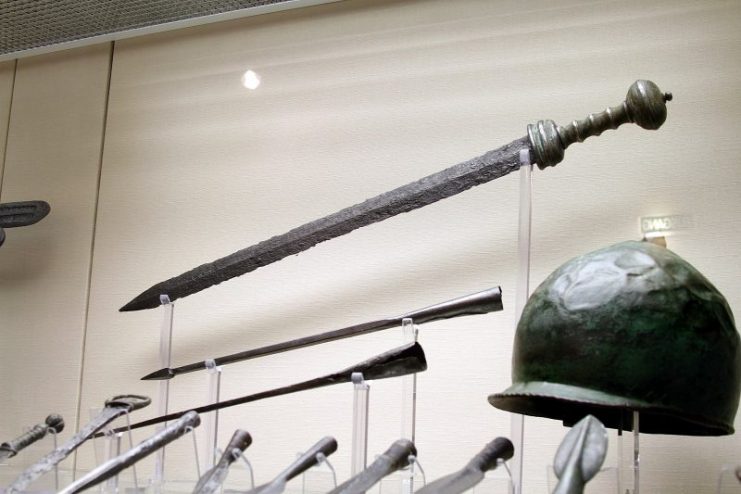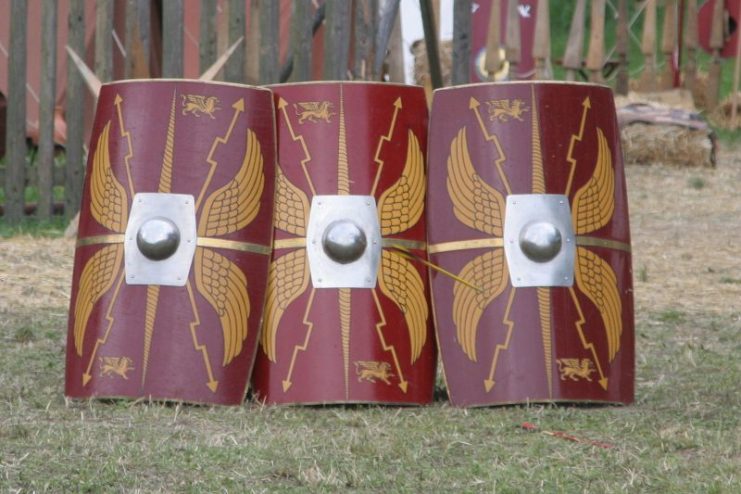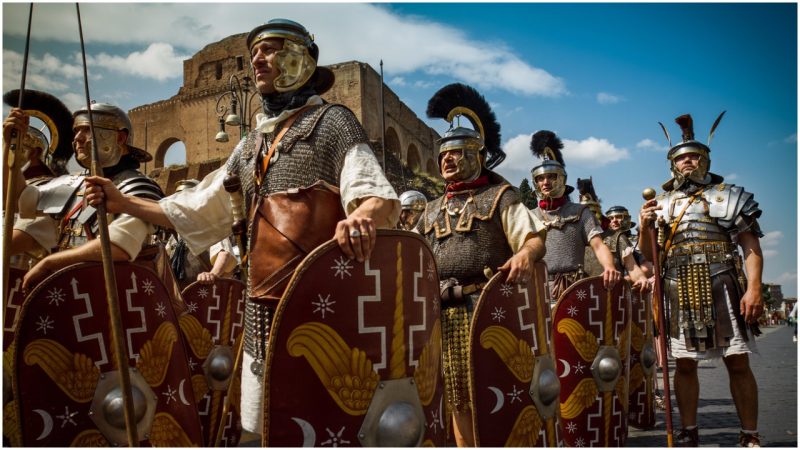Ruthless conquerors and efficient warriors, we remember the Roman legions as a force that swept across Europe and the Mediterranean, crushing everything in their path. Territorial conquest was an important part of why they went to war, but it was only one of several reasons.
1. Conquest
Of course, there is a reason why the Romans are remembered as conquerors, and why their nation is referred to as the Roman Empire rather than just the nation of Rome. Conquest was incredibly important to the Romans.
Wars of conquest obviously brought benefits to the Roman state as a whole. They increased the wealth, power and prestige of a nation that had started out as a minor city-state in a region colonized by Greeks and dominated by the Etruscans.
Conquest also brought slaves, who were a vital part of the Roman economy, not least because they worked in the gold mines and farms that produced much of Rome’s financial wealth.
But the decision to conquer was not made by the state as a mass, it was made by powerful individuals. For them, conquest was a great boon. It brought wealth, power and prestige to the individuals leading the armies.
By enriching the troops it made these leaders popular with the army, who could be vital in gaining and maintaining political power within Rome. Julius Caesar’s rise to dominance was fuelled by his conquest of the Gauls.

Modern wars of conquest involve one nation invading another, but in the Roman-era things were different. Much of the known world was not governed by nation-states, but by tribes, cities and leagues of settlements. Victory in a war of conquest meant turning one of these entities into a province or satellite state. It meant growth for the empire.
2. Punitive Attacks
The diplomatic power of Rome was built not on friendship, but on fear. To retain their dominance, the Romans needed their opponents to fear their armies, and most of all to fear the consequences of acting against Rome. The way to achieve this was the punitive expedition.
Punitive campaigns were often justified on the basis that Roman territory had been attacked, and so the Romans were seeking revenge. But this was not always the case. The defining feature of the punitive raid was not this vengeful element, but the launching of a war into foreign territory without the intention of conquest.
Like the chevauchées of the Hundred Years War or the terror attacks recently launched by Daesh, the punitive raid was meant to show people that they were vulnerable to the attackers, and so should not resist them. To achieve this, the attacks were destructive raids that went deep into enemy territory, pillaging and burning.

In the days of the Roman Republic, they were also an opportunity for the army to accumulate wealth through theft, but under the empire this stopped being such a significant factor. Instead, the emphasis was placed on speed and destructiveness for the greatest psychological impact.
These raids sometimes led to battles against enemy armies, but the Romans sometimes avoided outright confrontation. A battle could bring prestige, but it could also bring humiliating defeat. A raid without a battle provided the certainty of terrorizing opponents.
3. Suppressing Rebellions
The conquests of Rome inevitably led to resentful subjects who wanted to throw off the shackles of foreign rule. These revolts could be led by popular anger at Roman rule, the ambition of local leaders, or most likely a combination of the two. Some were triggered by the behavior of the Romans themselves, as in 60 AD when the atrocious treatment of the Iceni queen Boudicca and her daughters led to a widespread revolt in Britannia – a province that had only recently been conquered, and whose people remembered a life before the legions.
If a revolt seemed to be succeeding it would inevitably grow. Only the most determined would rise up against Rome in the initial stages, but if they were not stopped then others might see success as likely and so join in. The response needed to be swift and stern to stop rebellion spreading like a disease.
With troops spread across the empire, the reaction to a revolt could not always be both swift and stern at once. The Romans therefore took a chance on fast action deterring a revolt, mustering troops in the region as quickly as possible. If they succeeded then the revolt would be nipped in the bud. If the rebels overwhelmed them then a more substantial army would be mustered and sent to deliver the killing blow.

The initial loss was considered an acceptable one for the chance of preventing rebellion spreading. This was little comfort to men such as the 200 ill-armed soldiers shifted from escort and administrative duties to face Boudicca, and who were wiped out at Camulodunum.
4. Responding to Attack
Rome had a long border and they always needed to counter invasions and raids by external forces. They were often invaded by so-called barbarians, these were often Germanic tribes. The Roman response to these invasions combined a key feature of the response to revolts – quick response for the sake of damage limitation – with a feature of the punitive raid – the need to put the fear of Rome into the enemy.
The initial response was to muster whatever troops could be gathered in the vicinity of the raid, and use them against the enemy. These forces might not be gathered quickly enough to prevent the attack, but were often able to catch retreating raiders and defeat them. This was demonstrated in 50 AD when Publius Pomponius Secundus cut off Chatti raiders with a small initial force, then gathered his main army to defeat them as they withdrew.
The Romans countered invasions aggressively rather than defensively. If they lacked the forces to face the enemy in open battle then they would instead harass their moving columns and supply lines or besiege their strongholds. Even in defense, Rome went on the attack.
